Ertach Kernow - Travelling Cornwall's beautiful Atlantic Highway
The Atlantic Highway as the A39 is also known is the northern route in and out of Cornwall was until 2002 classified as a trunk road. This route is often overlooked because the A30 takes a greater amount of traffic than other roads through Cornwall as well as the A38 entering Cornwall via the Tamar Road Bridge between Plymouth and Saltash.
Although the A39 is probably far less well-known than the A30 or the A38 it is actually one of the longest routes through Cornwall and ends in England at Bath. It’s actual starting point is Falmouth joining the A390 as it snakes through Truro then becoming the A39 again at the Waitrose junction, also known as the Newquay Road. It merges with the A30 at the newly constructed roundabouts at Carland Cross before diverting and again becoming the A39 at the Indian Queens roundabout. The stretch between here and Barnstaple in Devon is often also better known as the ‘Atlantic Highway’ although many would argue it begins at the Trekenning roundabout at St Columb Major. It is said by many travel writers to be one of the best road trips in the UK, especially if you want to take a relaxed ride with occasional stops along the way. The countryside is mostly rural with lovely views over the landscape.
As always click the images for larger view
At the Trekenning roundabout the A39 bypasses St Columb Major. This bypass was completed in 1977 as St Columb’s narrow streets couldn’t cope with the increased numbers of vehicles. There are many opportunities to stop and visit historic monuments and sights along the route. Some 350 metres after the Winnard’s Perch roundabout on the right-hand side of the road there is an 18th century milestone, perhaps better viewed if travelling towards St Columb. This rectangular plan painted granite monolith with a pyramidal top with a benchmark is about 1metre high. Carved painted lettering in upper and lower case with Roman numerals tell travellers it is two miles to St Columb. Shortly after that, again on the right-hand side, are the remains of some Bronze Age barrows, but probably more interesting is the standing stone row named the Nine Maidens and Fiddler. These can be viewed by parking in a nearby layby with a short walk along the verge and seen on the far side of a field. This field is often occupied by sheep and if accessed respect for the land and livestock is necessary.
Continuing towards the charming town of Wadebridge and cross river settlement of Egloshayle this was bypassed in 1991. Having worked in Wadebridge during the early 1980’s I could see this was desperately needed and the town although now much busier and expanded remains a pleasant place. Its historic medieval bridge constructed in the late 1460’s was the vision of John Lovibond the Vicar of Egloshayle and a masterpiece of its time. Some three centuries later Dr William Borlase describe it as ‘to be the greatest bridge in Cornwall’. The bypass ensures it is now under far less strain from modern traffic. Wadebridge is well worth a side trip and across the bridge to Egloshayle the church there is an attractive stop for those interested in medieval church architecture.
Although somewhat winding the attractive Allen Valley with the River Allen running through is a pleasant journey. This river is a major tributary of the River Camel flowing from northeast of Camelford joining the Camel at Sladesbridge after passing through St Teath and St Kew Highway. The River Allen and valley are designated as areas of Special Site of Scientific Interest and Special Area of Conservation status due to the presence of otters and bullheads and given an Area of Great Landscape Value status. For those with time to stop there is a lovely circular walk from Egloshayle through the Allen Valley, passing Dinham Bridge and the Celtic hillfort at Castle Killibury with its two earth and rubble ramparts and ditches. There are tenuous Arthurian connections.
As the A39 heads towards St Kew Highway and beyond records show evidence of many medieval recorded settlement sites at Kelly around 1260, Tretawn in 1284, Brighter in 1391, Lanseague in 1302 which had a later cornmill fed by a leat. Another watermill site at Trehannick was recorded in 1469. These few settlement sites amongst many other recorded early sites as well as many medieval wayside crosses illustrate the significant nature of this roadway. St Kew itself is a historic settlement first mentioned in ‘The Life of St Samson of Dol’ and the earliest mention of a Cornish place. By the time of Domesday in 1086 St Kew was a large manor, separately the manor house at Pengenna, best known now as a wedding venue, dates from the early 16th century with parts potentially from the 9th century. The Church of St James was warmly mentioned by Nikolaus Pevsner the architectural historian best known for his series of guides ‘The Buildings of England’ and eminent Cornish historian Charles Henderson.
The Atlantic Highway passes through Helstone an early settlement which became a later medieval manor and mentioned in Domesday in 1086. This manor was owned by the Duchy of Cornwall appearing in the caption of seisin, a survey of the manors of Duchy of Cornwall conducted in 1337. Close by is the Lanteglos medieval parish church, dedicated to St Julitta. This is well worth a side trip with the church standing in a lovely churchyard with many interesting monuments. More can be read in an earlier Ertach Kernow article on the website.
The routes next major settlement is the historic town of Camelford, established as a borough by Richard Earl of Cornwall in the 13th century. This is the only real bottleneck on the A39, and the town has long been campaigning for a bypass and my fairly recent visit there confirmed that traffic through the town centre is a major cause of congestion on the A39. The River Camel runs through the town and there is a pleasant feel to this small Cornish town with a number of interesting shops and buildings. There is small church completed in 1938 and dedicated to St Thomas of Canterbury although the parish church is that previously mentioned at Lanteglos.
Shortly after leaving Camelford many people will know the access route to the Davidstow airfield and Bodmin Moor, close to the Crowdy Reservoir. There is also the huge Saputo Dairy Works which manufactures the Cathedral City brand of Cheddar Cheese. The adjacent Davidstow Airfield and War Museum contains a fantastic selection of interesting and quirky artefacts a visit is highly recommended. The museum closes temporarily throughout the winter and reopens at Easter through to mid-October. This route also provides access to Rough Tor and Bronn Wenneli Cornwall’s two highest peaks on Bodmin Moor. The Davidstow Parish church of St David lies about 1,200 yards along the A395 the right-hand turning just after the Saputo factory. This is a 15th century church, but extensively restored in 1875, with some 17th century slate memorials and 15th century bench ends and font. It’s considered to be worth a visit if in the area.
Following the Atlantic Highway into North Cornwall the next major town it passes through is Stratton once a significant Cornish town giving its name to the hundred and now skirting the much newer town of Bude. A settlement at Stratton was first recorded between 873 and 888, in the will of King Alfred where he gave ‘to Edward my elder son the land at Stratton in Triggshire’ and was mentioned again in Domesday in 1086. Although the present church at Stratton survives from the 14th century archaeological evidence has shown remains from at least the early 11th century. This is a town with considerable history and was home to the Cornish giant Anthony Payne, a painting of whom hangs in the Royal Cornwall Museum. He was born in what was the manor house in 1612, this is now the Tree Inn.
The final major town the Cornish A39 passes through before entering England is Kilkhampton with its medieval church of St James the Great. This later 14th century church replaced an earlier Norman building but kept the wonderful doorway described by historian Charles Henderson as one of the best pieces of Norman work in Cornwall, supported by Nikolaus Pevsner who confirmed it as being the most important feature of the present church. Kilkhampton is a town with a rich history and had close connection to the Grenville family with its many heroes until the family died out at the beginning of the 18th century.
From the Atlantic Highway there are many smaller roads taking traffic to some better and lesser-known tourist attractions. These include famous Tintagel and the town of Padstow with its various attractions and many smaller coastal villages. St Gennys with its medieval church and Iron Age promontory fort now much eroded, the attractive harbour village of Boscastle and well-known Port Isaac with nearby Port Gavin and Port Quinn. Approaching Trevose Head with its lighthouse many smaller communities with historic churches are often sadly overlooked. In North Cornwall Poundstock with its church and Glebe House is just off the Atlantic Highway and of course there is Morwenstow with its Reverend R. S. Hawker connection and Coombe where he wrote the words to ‘Trelawny’. Morwenstow along with Stratton, Bude and Kilkhampton have been covered previously in the Ertach Kernow series of articles and can be found on this website.
During the spring and autumn remain a short windows of opportunity for Cornwall’s residents to enjoy a period of being able to move around and explore some of our Cornish towns and villages outside the busy summer tourist season. There are some lovely places that can be reached via the A39 a road that perhaps is often overlooked by many folk.

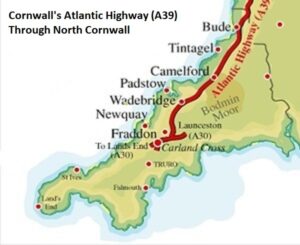
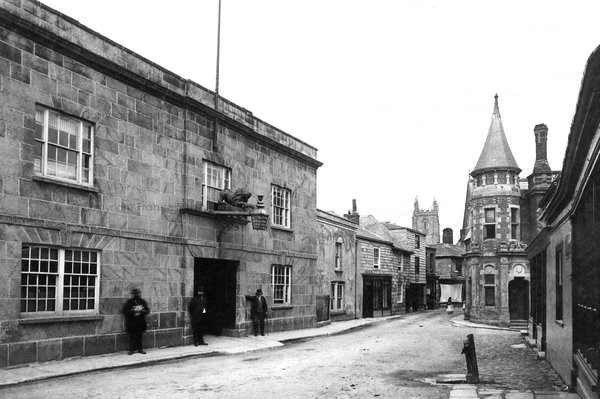
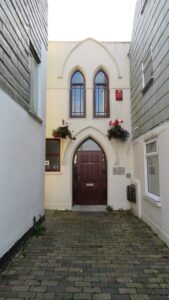
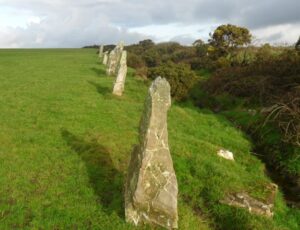
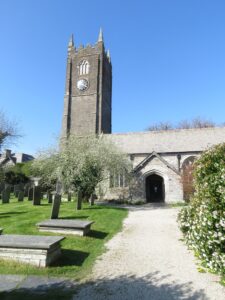
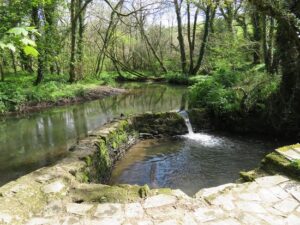
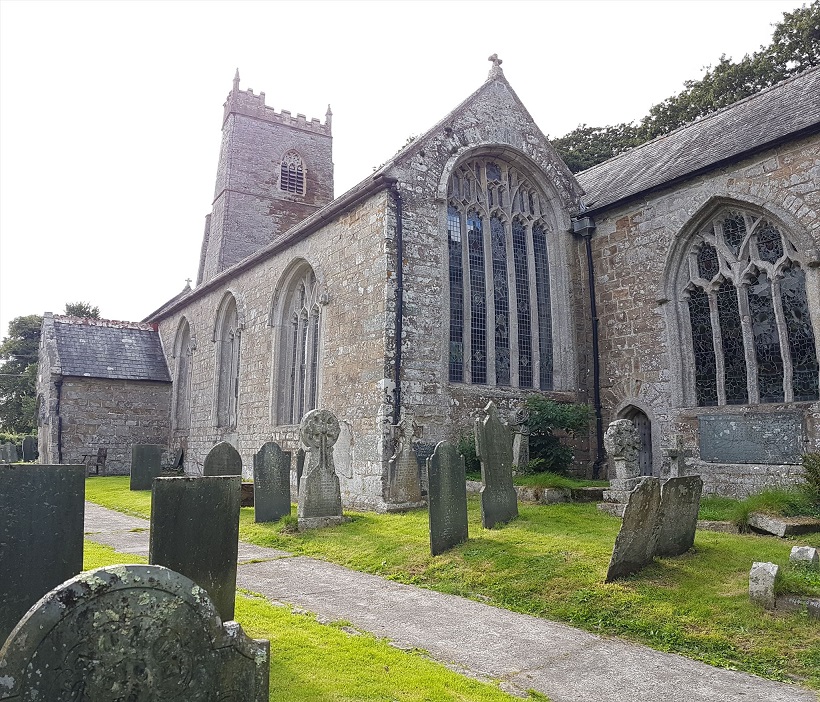
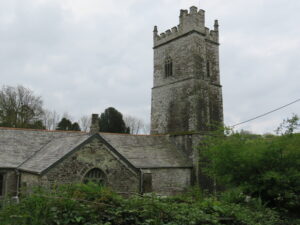
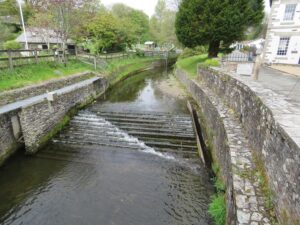
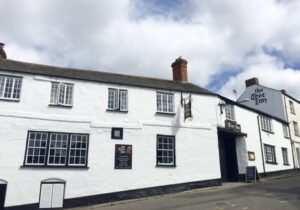
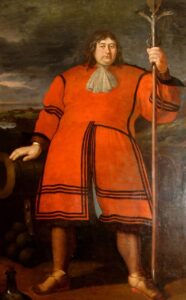
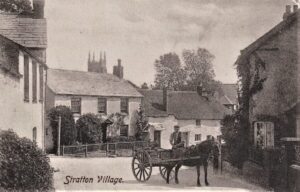
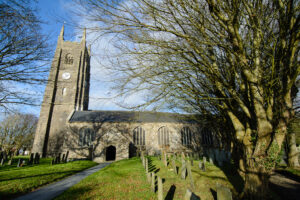
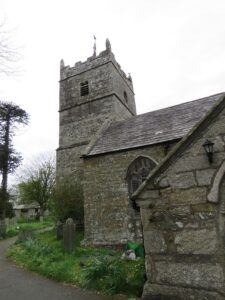
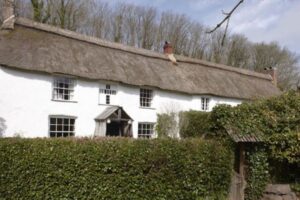
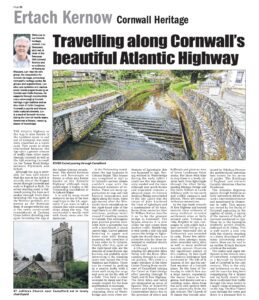
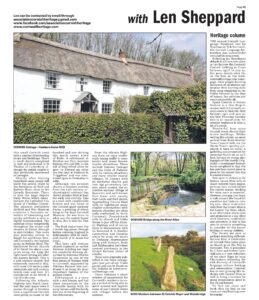
![[196] Ertach Kernow Heritage Column - 27th March 2024 - Cornish language, mining heritage & Cornish films Ertach Kernow Heritage Column - 27th March 2024 - Cornish language, iconic Bude building, mining heritage & Cornish films](https://www.cornwallheritage.com/wp-content/uploads/2024/03/196-Ertach-Kernow-Heritage-Column-27th-March-2024-Cornish-language-mining-heritage-Cornish-films-300x293.jpg)